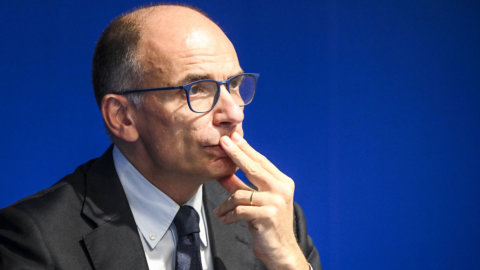From good keynesian, the minister Tria believes in healing power of public investment. And it is perhaps with this faith that he acquitted himself for having accepted the "toad" of a 2,4 percent deficit. The Minister of Economy is convinced that the investor State will be able to increase by 4 decimals, at 1,6 percent than expected, economic growth in 2019, allowing a slight decrease in the debt to GDP ratio even with a deficit of 2,4.
The agriculture minister Savona is on the same line, even if it gives paradoxically different numbers. Italy, says Savona, has state accounts with a primary surplus (revenue minus expenses net of interest on the debt) and foreign accounts which are also in surplus. It can therefore afford to mobilize 50 billion of resources and start the virtuous circle of more investments, greater growth, lower GDP debt ratio to get out of the austerity trap.
The same figure, 50 billion, can be found in the declarations of Prime Minister Conte: we have allocated 38 billion for investments for the next 15 years and 15 for the next three years (actually the Gentiloni government had set the 38 billion). Put in these terms, of course, the question would seem to be a non-problem. But is not so.
the the theme ofThe impact of public investment on GDP is in fact highly controversial and if some analysis agrees with Tria and Savona, the majority of economists are doubtful. According to a recent document from theIMF, which examines the issue in general, public investment has lasting positive effects on production and incomes. In particular, an increase of one point increases the level of GDP by about half a point in the same year and by one and a half points four years later.
However, those who believe that the economy is moving mainly thanks to innovation and reforms that increase the efficiency of the market remain skeptical. For Carlo Cottarelli the leverage of public investment is important but “it is not the panacea”. According to the governor of the Bank of Italy, Ignazio Visco, the assessment of the impact of public investment is “surrounded by high uncertainty” because “the size of the multiplier depends on various factors” the list of which is very long.
But it is above all experience historical the greatest enemy of the Keynesian fans of state investments. For years, governments of various colors have allocated significant sums to the budget to be used to increase the infrastructural endowment, research, environmental quality, billions, however, which do not translate into projects and remain mostly a dream book.
Currently, Tria himself revealed in a confidential meeting before the maneuver, there are in the folds of the state budget appropriations for 150 billion intended to be used over the next 15 years, 118 of which can be activated immediately, but which are not leaving for the most diverse reasons.
This is the “treasure” of hope for the Minister of Economy. Every now and then Tria discovers a new box set: blocked investments in social security institutions or a prison plan that ended up in a drawer of the Ministry of Justice, for example.
Even when they come out of the dream book however investments have an uncertain and long-term impact. According to a research by the ECB conducted by Jasper De Jong who analyzed the economic fallout of public investment in various European countries since the 60s, in Italy the multiplicative effects are among the lowest, almost nil. According to a line of analysis (see Bruegel's economist, Alessio Terzi, in the Foglio of 26 August) this depends on the fact that the decisions are often conditioned by political and electoral interests which undermine the rigorous results of the cost-benefit analysis.
Since 1982 there have been unsuccessful attempts to put the cost-benefit analysis at the service of the investment decisions of the Public Administration. The first to try was Savona himself, at the time at the top of the Ministry of the Budget, with the creation of a technical evaluation unit immediately crippled by political pressure and transferred first to the Treasury and then to Economic Development.
Romano Prodi then tried again with the creation of Invitalia which makes use of European methodologies but its evaluations are not disclosed. Finally, in 2014 Matteo Renzi set up the verification and control unit on the ashes of the old Savona unit but according to Luigi Marsullo, evaluator for the government and the EU Commission, "it does not seem that it too has produced appreciable results".
Now Tria is trying again, according to which "we need to rebuild a structure that represents a sort of updated version of the Civil Engineering Department and is capable of providing definitive projects to the bodies that need to build or renovate homes, hospitals or schools”. We will see.




